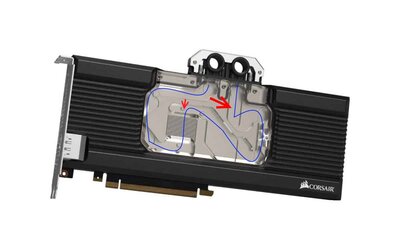St4ubf1nger
New Member
- Joined
- Jul 23, 2019
Hey!
[First time posting, sorry when something is not correct]
I am trying to get into Watercooling, and have looked a lot of videos and stuff.. But one thing strikes me odd for some time now.
When you watch a block get filled, you can see, that some of the water flows OVER the walls, that are made into the block.
I assume these walls are made to controle, where the water is going, but i dont understand, why there should flow water ABOVE them.
There are videos of blocks being filled on Corsair's website, and you can see the effect I desciped above, when following the bubbles and water flow.
Here is a link: https://www.corsair.com/de/de/Kateg...IES-GPU-Wasserblock-(2080-FE)/p/CX-9020002-WW
So here is the question: Why are the walls not made fully to the cover of the block? Is that intendet or manufactured poorly?
Greetings from Germany
[First time posting, sorry when something is not correct]
I am trying to get into Watercooling, and have looked a lot of videos and stuff.. But one thing strikes me odd for some time now.
When you watch a block get filled, you can see, that some of the water flows OVER the walls, that are made into the block.
I assume these walls are made to controle, where the water is going, but i dont understand, why there should flow water ABOVE them.
There are videos of blocks being filled on Corsair's website, and you can see the effect I desciped above, when following the bubbles and water flow.
Here is a link: https://www.corsair.com/de/de/Kateg...IES-GPU-Wasserblock-(2080-FE)/p/CX-9020002-WW
So here is the question: Why are the walls not made fully to the cover of the block? Is that intendet or manufactured poorly?
Greetings from Germany
